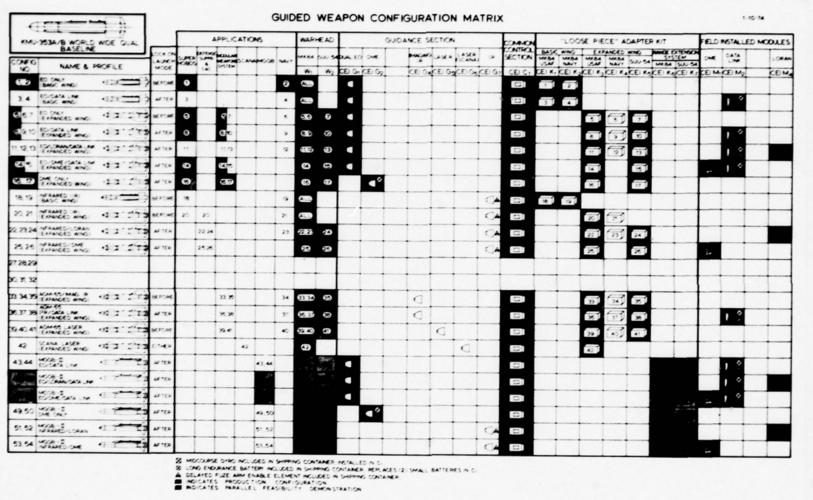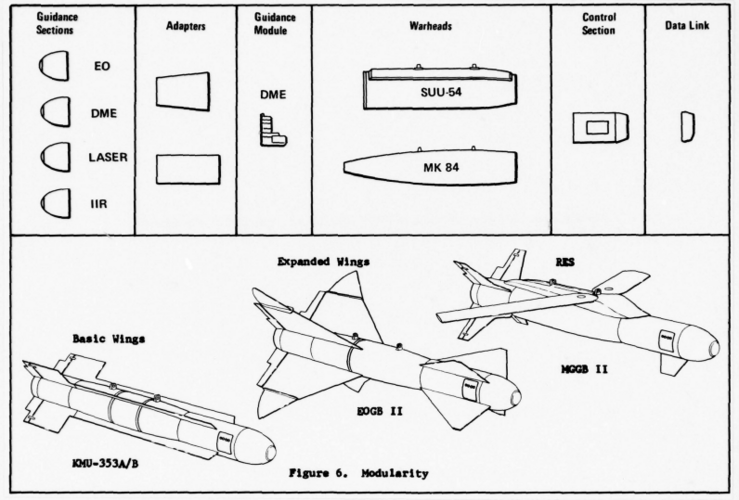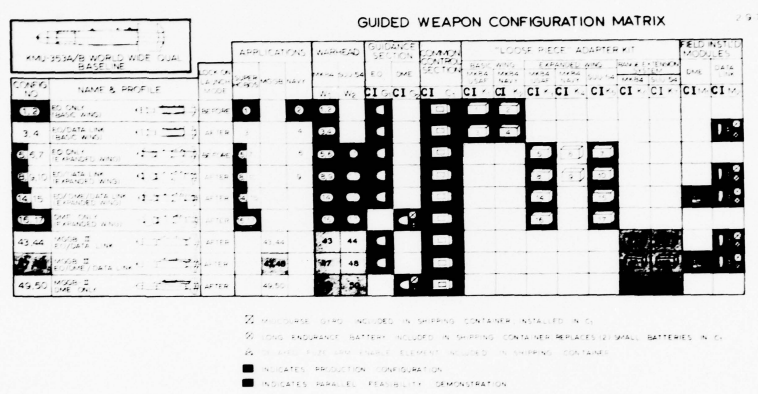Yellow Palace
ACCESS: Top Secret
- Joined
- 5 May 2007
- Messages
- 1,035
- Reaction score
- 1,694
The GBU-15/20 Modular Guided Weapons System turns out to be a lot more complex than I'd imagined. Like, a lot. Initially, no fewer than fifty-four configurations were envisaged, with various configurations of:
Interestingly, the details of six configurations, presumably including one missing guidance section and 'field-installed module', aren't shown in the configuration matrix. All of this came under the 'Pave Strike' programme, which also gave us the EF-111A, F-4G, and the TR-1 aircraft, as well as Pave Tack, laser and IIR Maverick, and a projected electronic warfare RPV.
- Mark 84 or SUU-54 dispenser warheads
- Electro-optical, imaging IR, 'distance-measuring' (which seems to be inertial), or laser guidance - with two possible IR or laser modules!
- Three different wing configurations - the standard short-chord wings for direct attack only, expanded (i.e. long chord) wings for standoff and low-altitude delivery, and high-lift wings for range extension, which became the GBU-20.
- Options to add data links, distance measuring, and even LORAN
Interestingly, the details of six configurations, presumably including one missing guidance section and 'field-installed module', aren't shown in the configuration matrix. All of this came under the 'Pave Strike' programme, which also gave us the EF-111A, F-4G, and the TR-1 aircraft, as well as Pave Tack, laser and IIR Maverick, and a projected electronic warfare RPV.




